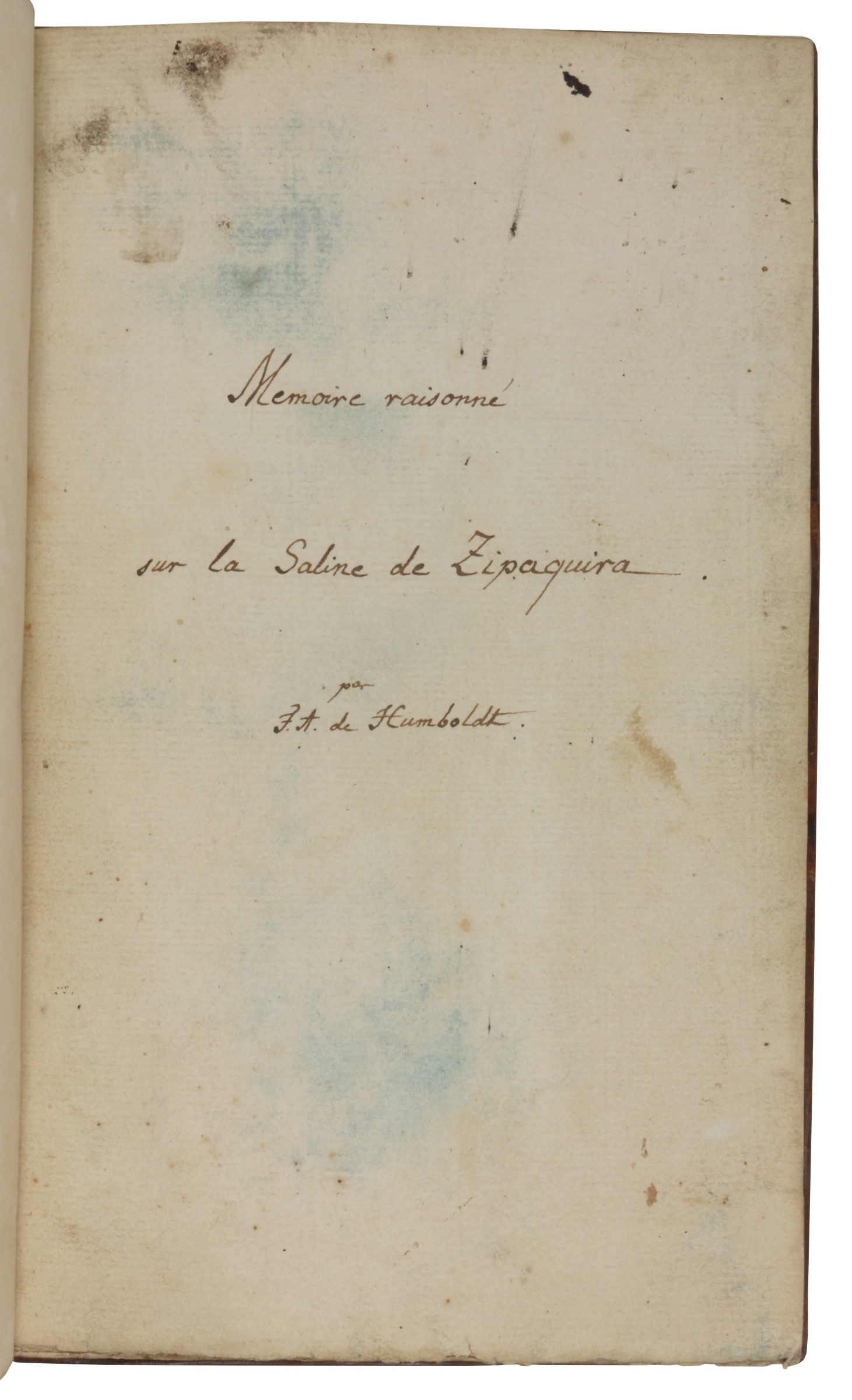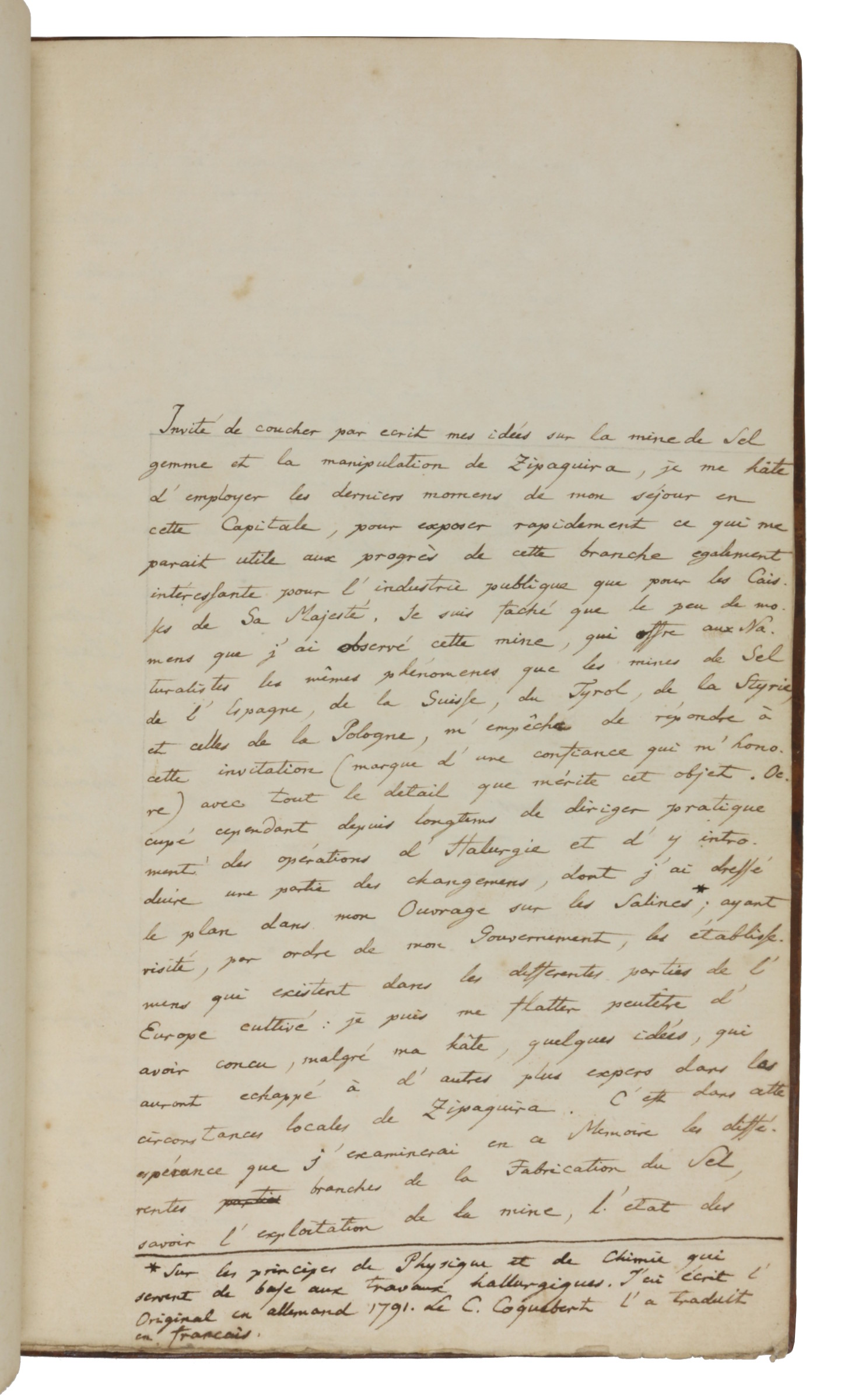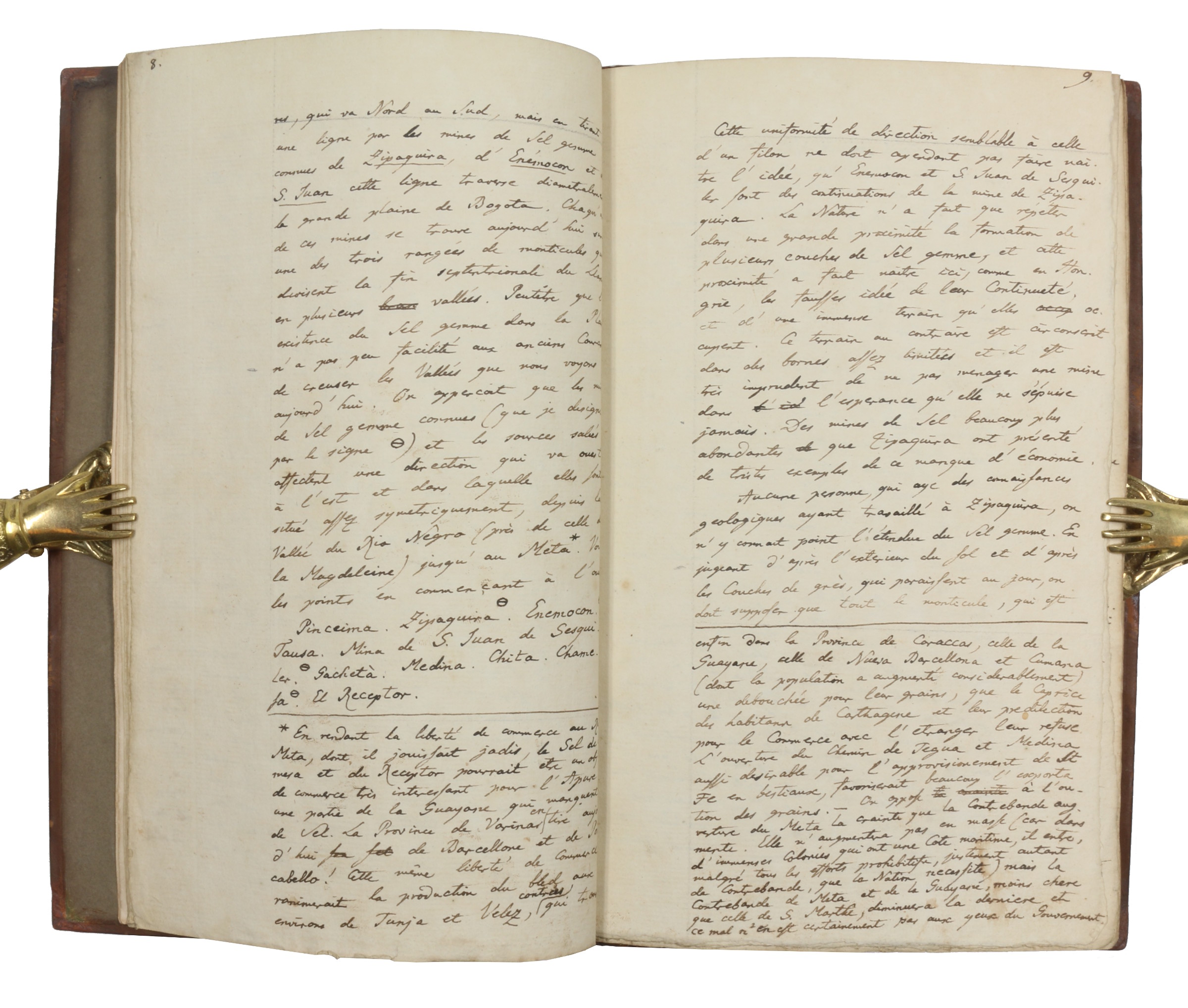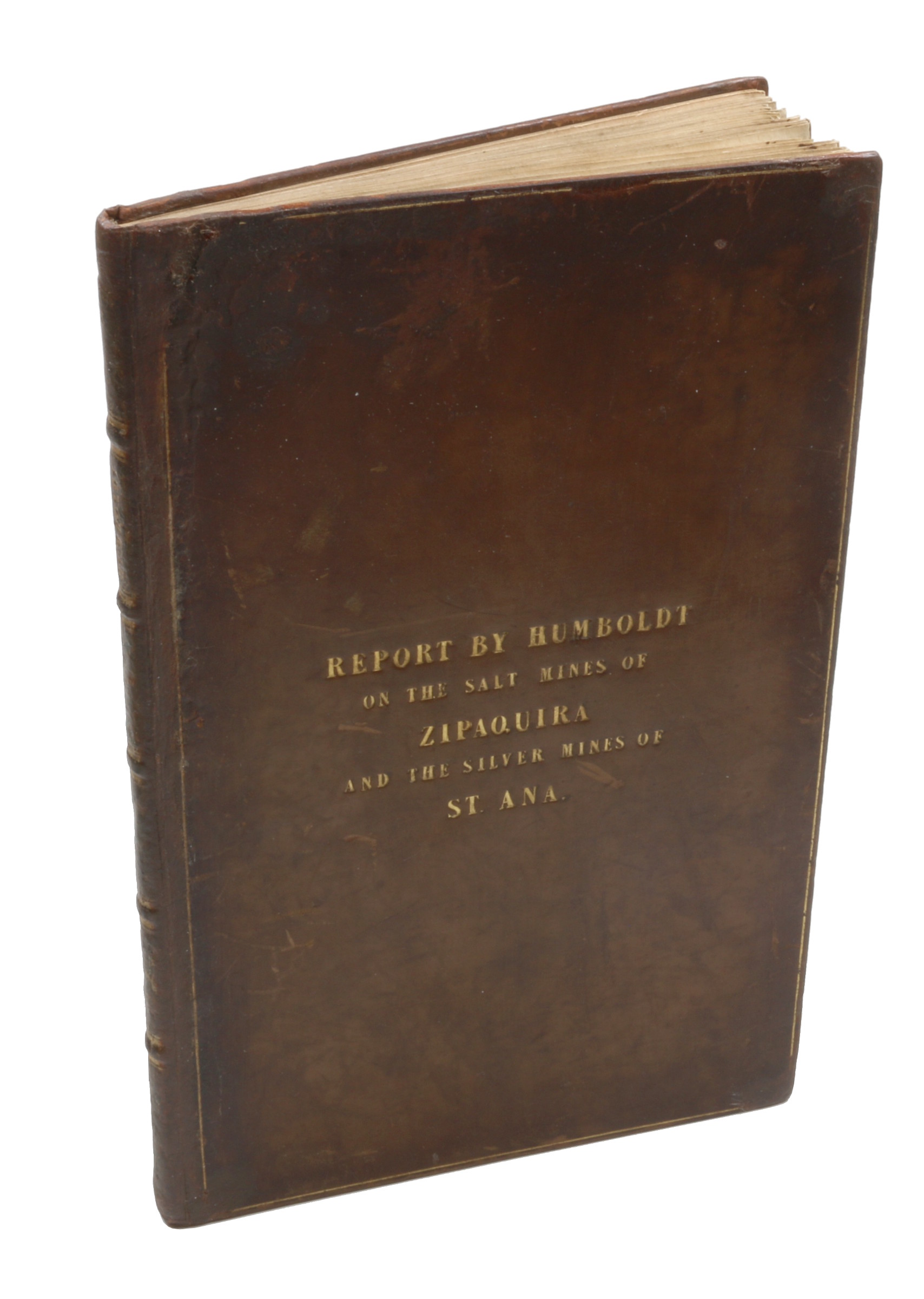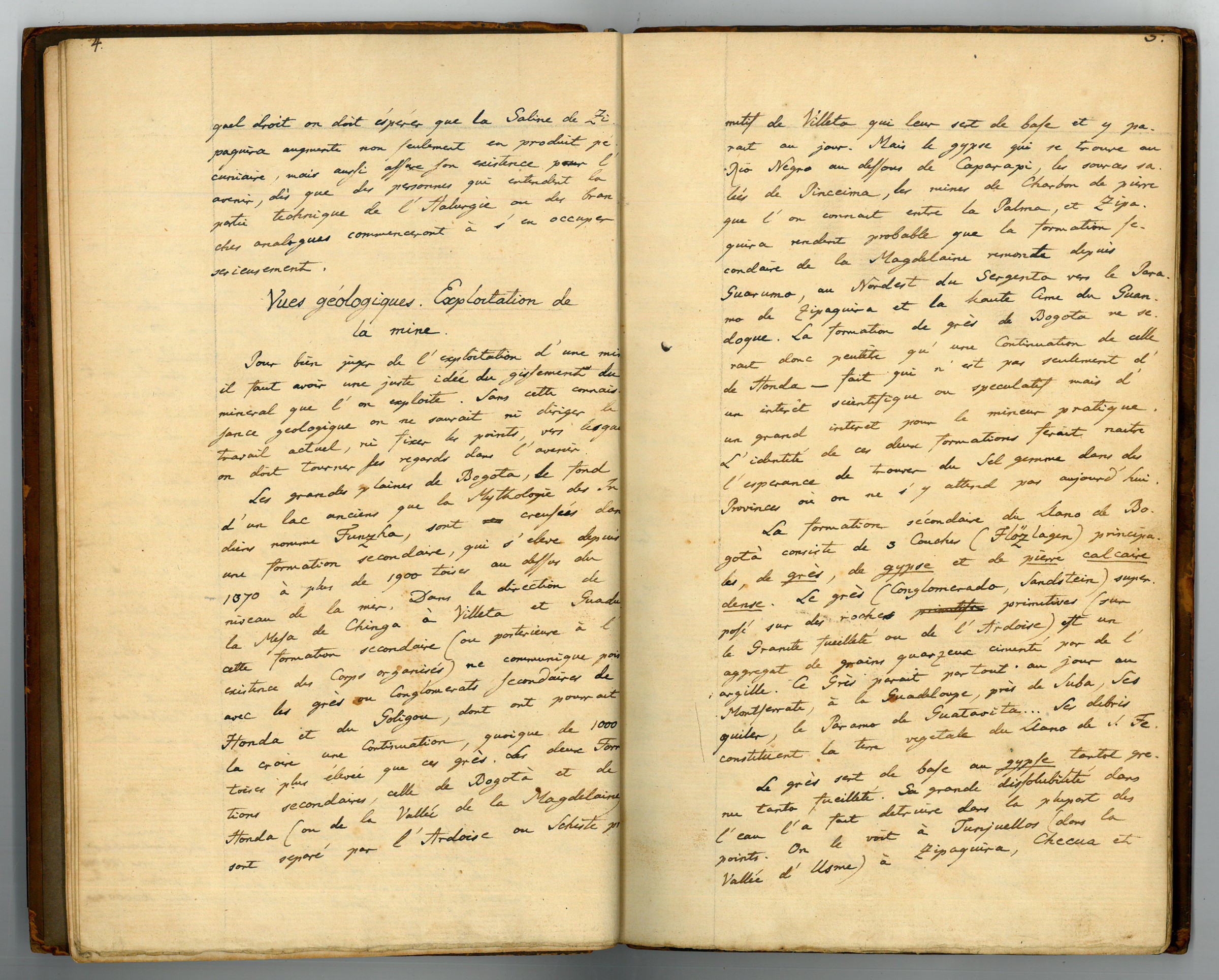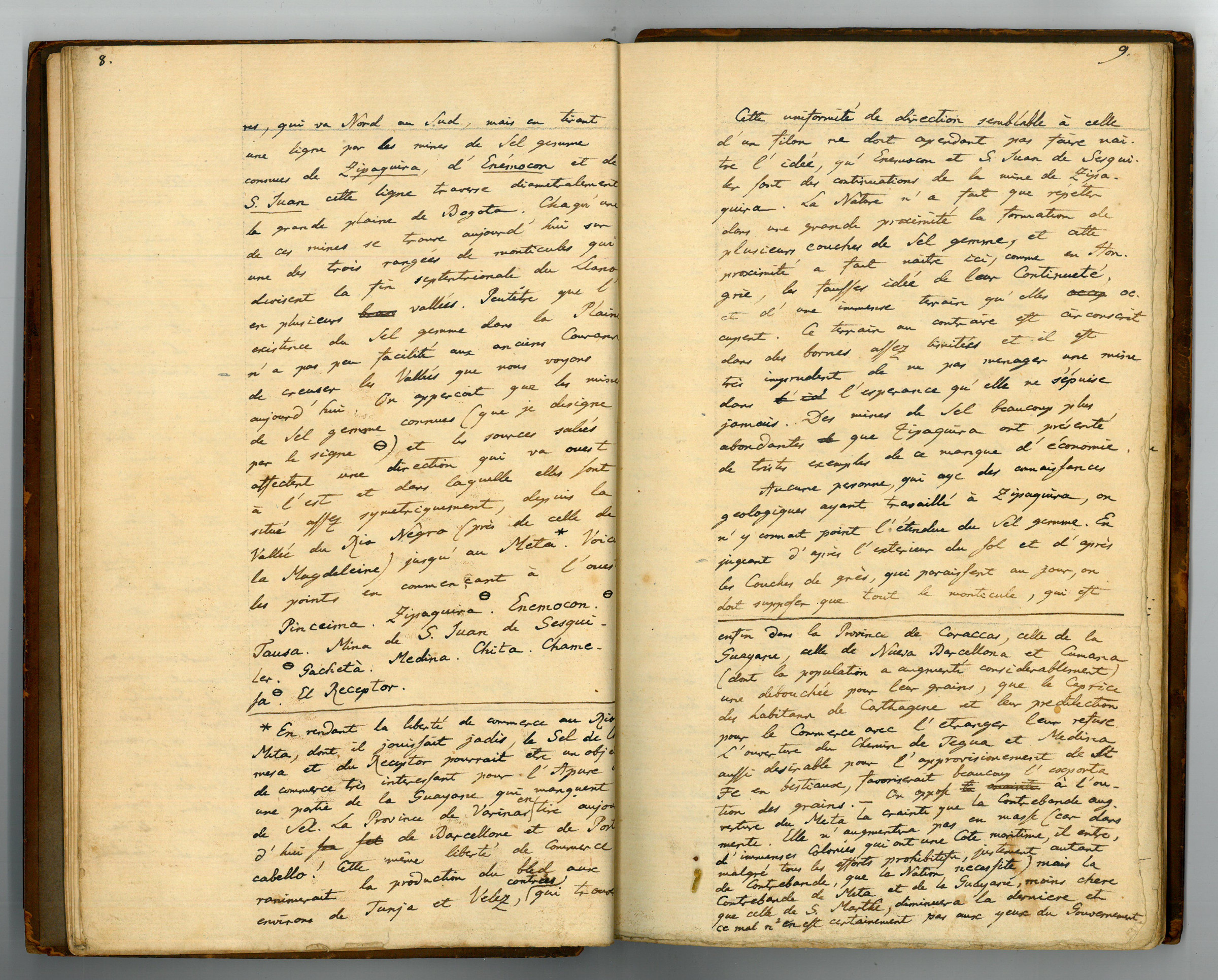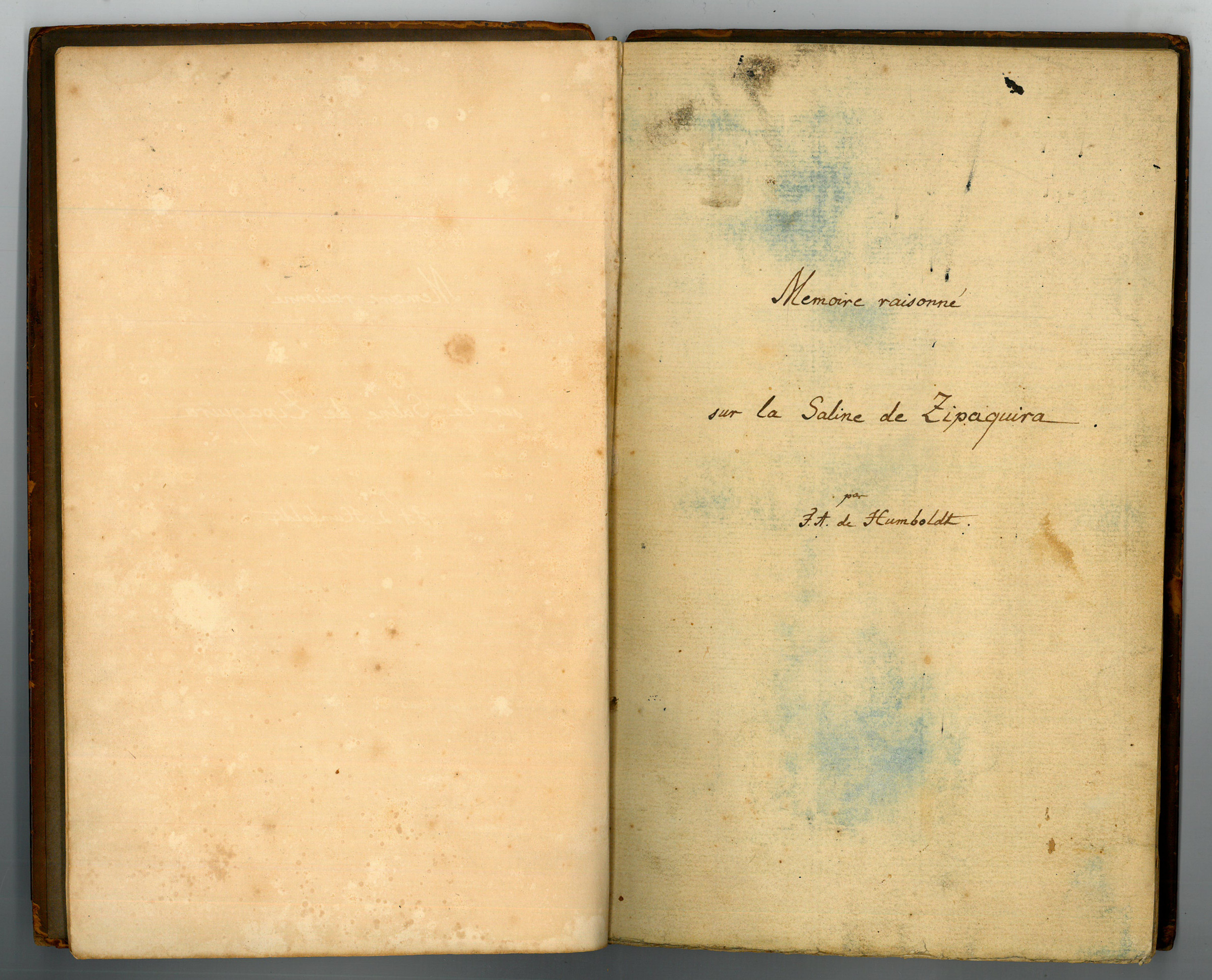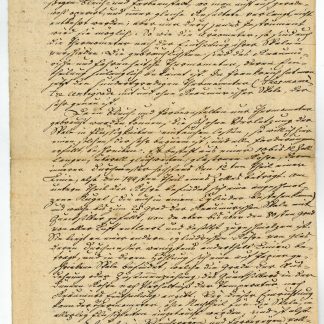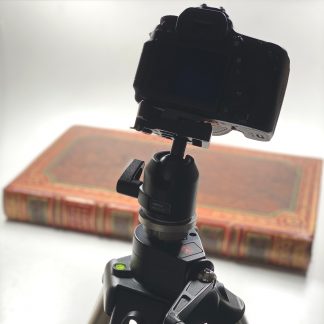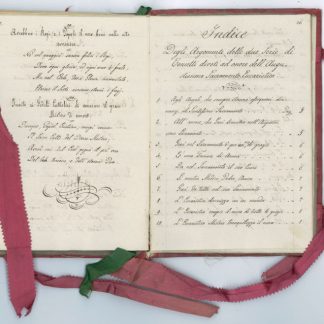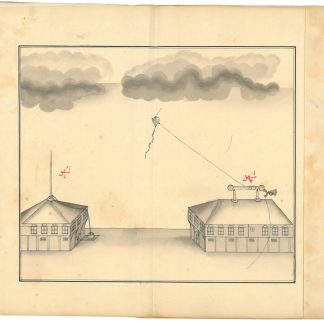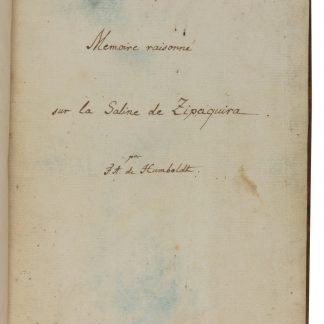Alexander von Humboldt's detailed study of the salt mines of Zipaquirá
"Memoire raisonné sur la Saline de Zipaquira". Autograph manuscript signed twice ("F. A. de Humboldt" and "Humboldt").
Tall 4to (156 x 246 mm). French ms. on paper. 47 pp. (including autograph title-page). Near-contemporary giltstamped full calf with giltstamped title in English to upper cover and author's last name to spine. Leading edges gilt.
€ 58.000,00
An exceptional report and a fine example of the observational and analytical skills that marked Humboldt's work on his celebrated expedition to Spanish America, authorized by the Spanish monarchy in 1799. Accompanied by Aimé Bonpland he arrived in Colombia, after having spent three months in Cuba, in July 1801. In September he visited the vast salt mines of Zipaquirá in the Cundinamarca Department, thirty miles north of Bogotá, resulting in the report at hand. These salt deposits were formed 250 million years ago and had been exploited by the pre-Columbian Muisca people since the 5th century B.C. Humboldt's description, written in French in his diminutive hand, covers 46 tightly-packed pages. After three pages of introductory remarks, he divides his work into sections titled "Vues géologique. Exploitation de la mine", "Sources salées et leur Concentration", and "Cuite de Sel et Transport du Produit".
In his account Humboldt notes that the mine was bigger than those found in Spain, Switzerland, Poland, and the Tyrol, with a calculated resource estimation of one million cubic meters. He also describes the traditional halite mining at the site and recommends a switch to drift mining, following the principle used at Berchtesgaden, Hallein and Aussee, where the conditions are similar: "Voici la methode de laquelle on s'y prendrait, d'après l'analogie de Berchtesgaden, Hallein, Aussee dont le local est absolument semblable à celui de Zipaquira". He proposes driving corridors through the mountain towards the South and Southwest, thus reaching deeper levels where the purest salt is located. Once this fertile level is reached, large areas of 90,000-150,000 square feet need to be excavated, as far as the rock's solidity permits, creating 15-20 chambers on different levels, their number depending on the amount of salt produced and the richness of the mine. In these chambers, or "Wöhre", the miner will encounter fresh water running down the walls nibbling at the salt they contain, enriching itself up to a salinity of 25%. The water then merely needs to be channeled away and heated: "On percera la montagne de Sel par des galleries (Socabones) que l'on poussera en avant au Sud et Sudouest vers les points ou le Sel gemme est le plus riche. On fait, par ce qui a été dit antérieurement que le sel le plus pure est a une profondeur a laquelle la fouille actuelle n'att[e]int pas [...] Arrivé dans une partie de la mine bien abondontée on fera de grandes excavations de plus de 90,000 à 150,000 piés quarrés de superficie selon que la solidité de la Roche, (de Sel gemme) le permet. Ces excavations qu'en langue de mineur en nomme Wöhre ou Sinkwerke, sont de grandes Sal[l]es souterraines de 2-3 toises de haut [...] On a, selon la quantité de Sel que l'on produit et la richesse de la mine 15-20 de ces Chambres dans une Montagne de Sel, a differentes hauteurs [...] C'est dans ces Wöhre que par des puits ou des galleries superieurs selon que l'on rencontre les eaux douces [...] Elles y dissolvent, en rongeant, le Sel gemme contenu dans les parois [...] Lorsque l'Arcometre annonce au mineur que les eaux douces se sont enrichis à 24-25 p. C. [...] on fait découler ces pour ces artificielles qui ne necessite, plus que d'être cuites [...]".
Title-page and final page lightly duststained, minor ink stains in places. Spine and hinges professionally repaired.

